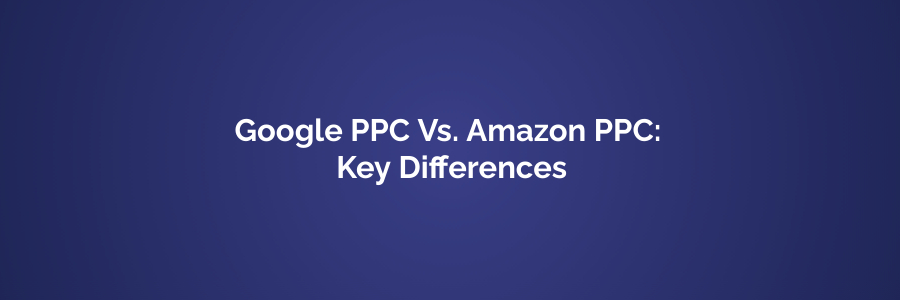
Google PPC (Pay-Per-Click) and Amazon PPC are both popular online advertising platforms, but they have some key differences due to their distinct purposes and audience targeting. Here are the key differences between Google PPC and Amazon PPC:
-
Platform Purpose:
- Google PPC: Google Ads, formerly known as Google AdWords, primarily focuses on search engine advertising. It displays ads on Google's search results pages and across the Google Display Network, including websites, YouTube, and apps.
- Amazon PPC: Amazon PPC, on the other hand, is designed specifically for promoting products within the Amazon marketplace. It allows sellers to advertise their products on Amazon's search results pages and product detail pages.
-
Audience Intent:
- Google PPC: Users on Google are typically in a research or discovery mode when they use the search engine. They may be looking for information, solutions, or products. Google ads can reach users at various stages of the buying process.
- Amazon PPC: Users on Amazon are often in a buying mindset, actively searching for products to purchase. Amazon ads target users who are further along the sales funnel and more likely to make a purchase.
-
Ad Formats:
- Google PPC: Google Ads offer various ad formats, including text ads, display ads, video ads (on YouTube), shopping ads, and more. The format depends on the campaign type and advertising goals.
- Amazon PPC: Amazon PPC primarily offers sponsored product ads, sponsored brand ads, and sponsored display ads. These ads are designed to showcase products within the Amazon marketplace.
-
Keyword Selection:
- Google PPC: Advertisers on Google select keywords relevant to their products or services. The competition for specific keywords can be intense, and bid strategies play a crucial role in ad placement.
- Amazon PPC: In Amazon PPC, advertisers choose relevant keywords, but they also have the option to target specific products or categories. The focus is on product-related keywords and customer search terms.
-
Ad Placement:
- Google PPC: Google ads can appear on various Google-owned platforms and partner websites, depending on the campaign settings and ad format. They are not limited to a single platform.
- Amazon PPC: Amazon ads are displayed exclusively within the Amazon marketplace, targeting Amazon shoppers directly.
-
Conversion Tracking:
- Google PPC: Google Ads provides robust conversion tracking tools that allow advertisers to measure various actions beyond just purchases, such as form submissions, app downloads, and phone calls.
- Amazon PPC: Amazon provides conversion tracking focused on sales within the Amazon marketplace, making it easier to measure the direct impact of ads on product sales.
-
Reporting and Analytics:
- Google PPC: Google Ads offers extensive reporting and analytics tools, including Google Analytics, to help advertisers track and optimize their campaigns across multiple platforms.
- Amazon PPC: Amazon provides detailed reporting specific to its platform, allowing sellers to monitor their advertising performance within the Amazon ecosystem.
In summary, while both Google PPC and Amazon PPC are effective advertising platforms, their differences lie in their primary purpose, audience intent, ad formats, keyword selection, ad placement, and reporting capabilities. Advertisers should choose the platform that aligns with their goals and target audience. Many businesses also use both platforms to reach different segments of their customer base.
Related Article - 5 Reasons to Clean Up Your GTM Containers
Magento 2 SEO Expert Advice Boosting Your E-commerce Success

 Register
Register Sign in
Sign in



